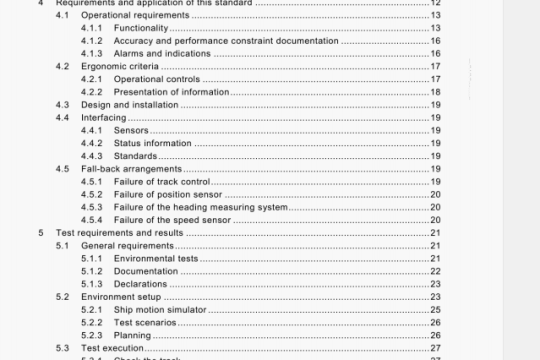IEC 62219:2002 pdf download
IEC 62219:2002 pdf download.Overhead electrical conductors -Formed wire, concentric lay,stranded conductors.
For the purpose of this International Standard the following definitions apply:
3.1
aluminium
all types of aluminium and aluminium alloys listed
3.2
conductor
material intended to be used for carrying electric current consisting of a plurality of uninsulated wires twisted together
[1EV 466-01-15 modified]
3.3
concentric lay stranded conductor
conductor composed of a central core surrounded by one or more adjacent layers of wires being laid helically in opposite directions
3.4
direction of lay
3.4.1
direction of lay (general definition)
direction of twist of a layer of wires as it moves away from the viewer
NOTE A right-hand lay is a clockwise direction and a left-hand lay is an anti-clockwise direction.
[1EV 466-10-07 modified]
3.4.2
direction of lay (alternative definition)
the direction of lay is defined as right-hand or left-hand
NOTE With right-hand lay, the wires conform to the direction of the central part of the letter Z when the conductor is held vertically. With left-hand lay, the wires conform to the direction of the central part of the letter S when the conductor is held vertically.
3.5
equivalent wire diameter
the diameter of a round wire which would have the same cross-sectional area, mass and electrical resistance as a given formed wire of the same material
3.6
compactness ratio
area 1/area 2 — where area I is the total cross-sectional area of the conductor including the core and area 2 is the area of a circle with diameter equal to the conductor outside diameter
3.7
fill ratio
area 1/(area 2 — area 3) — where area 1 is the cross-sectional area of the aluminium portion of the conductor, area 2 is the area of a circle of diameter equal to the conductor outside diameter and area 3 is the area of a circle circumscribing the core of a composite conductor (0 for a homogeneous conductor)
3.8
formed wire
filament of metal having a constant cross-section and a non-circular shape
3.9
lay length
axial length of one complete turn of the helix formed by an individual wire in a stranded conductor
3.10
lay ratio
ratio of the lay length to the external diameter of the corresponding layer of wires in the stranded conductor
[1EV 466-10-06 modified]
3.11
lot
group of conductors manufactured by the same manufacturer under similar conditions of production
NOTE A lot may consist of part or all of the purchased quantity.
3.12
nominal
name or identifying value of a measurable property by which a conductor or component of a conductor is identified and to which tolerances are applied
NOTE Nominal values should be target values.
3.13
round wire
filament of drawn metal having a constant circular cross-section
3.14
steel ratio
the ratio of steel area to aluminium area as a percentage in AxF/Syz conductors
4 Designation system
A designation system is used to identify stranded conductors made of formed aluminium, with or without steel wires.
Homogeneous aluminium conductors are designated AxF, where x identifies the type of aluminium.
Composite aluminium conductors are designated AxF/Ay or AxF/AyF, where AxF identifies external wires (or the envelope) and Ay or AyF identifies internal wires (or the core).
Composite aluminium-steel conductors are designated AxF/Syz or AxF/SA, where AxF identifies the external aluminium wires (envelope), and Syz or SA identifies the steel core. In the designation of zinc coated steel wires, y represents the type of steel (regular, high or extra high strength) and z represents the class of zinc coating (A or B).
Conductors are identified as follows:
a) a code number giving the equivalent conductive section of A1F aluminium expressed in mm2
b) a code number giving the area of the core material in mm2, if used;
5.2 Formed wires
Three production processes are recognized in this standard. One uses wires which are shaped in one process and stranded in another. The second method both forms the wires and then strands the wires in a single operation. In the third method a layer of round wires is first stranded and then that layer is compacted to a circular cross-section. Additional layers of round wires may be stranded and compacted or additional layers of formed wires may be stranded over the compacted core.
In any of these cases the materials shall comply with IEC 60889 or IEC 60104.




